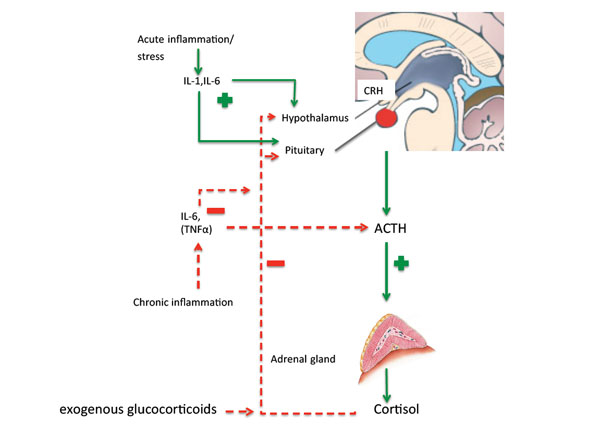Fig. (1) HPA axis response to acute and chronic stress leading from inflammation. CRH-corticotrophin releasing hormone, ACTHadrenocorticotrophic
releasing hormone, IL-interleukin, TNF-tumor necrosis factor. Green arrows indicate activation, red arrows indicate
suppression. HPA axis gets activated by specific cytokines released during inflammation (IL-1, IL6). IL-6 has been recognized as important
in innate immune response [59]. Acute inflammation leads to activation of HPA axis and marked and prolonged elevation of plasma ACTH
and cortisol, however chronic activation of HPA axis leads to a blunted ACTH and cortisol response as a protective adaptation mechanism
[60]. Exogenous corticosteroids lead to suppression of the HPA axis in the same manner as cortisol that inhibits both CRH and ACTH
synthesis [61].

